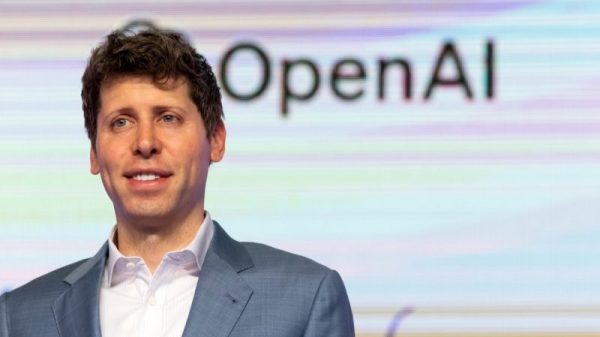Hugh Aynesworth, a journalist at the Dallas Morning News who took a lunch break to watch President John F. Kennedy visit the city in November 1963, and then wrote some of the most gripping firsthand accounts of JFK’s assassination and the arrest of Lee Harvey Oswald as the suspected gunman, died Dec. 23 at his home in Dallas. He was 92.
His family announced the death but gave no specific cause. He was treated last month for health problems related to an earlier stroke.
Mr. Aynesworth’s more than six-decade career in journalism brought him awards and acclaim for investigations that included debunking claims by a self-proclaimed serial killer and probing the bloodshed of another, Ted Bundy.
That early afternoon in Dallas on Nov. 22, 1963, had already cemented Mr. Aynesworth’s place in journalism. His first-person reportage, written with brevity and power, brought readers to the scenes of three moments seared into historical memory: the gunfire on Kennedy and his motorcade, the arrest of Oswald at a movie theater later that day, and the fatal shooting of Oswald on Nov. 24 by nightclub owner Jack Ruby.
“I was less than a block away. The president had just passed, beaming and waving,” wrote Mr. Aynesworth, who covered aerospace and came to a spot on the edge of Dealey Plaza hoping to get a glimpse of the president and the first lady, Jacqueline Kennedy.
“I heard the first shot. I looked immediately toward the president’s car and thought I saw his hair fly up … I ran toward the caravan,” the story continued. “There was a lot of confusion. Someone shouted, ‘I saw him up there,’ and pointed toward the Texas School Depository building.”
Mr. Aynesworth stayed near a police radio. He knew the prime suspect was Oswald, a School Book Depository employee who had just fatally shot a police officer, witnesses said. Mr. Aynesworth heard the tip that a man believed to be Oswald had ducked into the Texas Theatre, about three miles from Dealey Plaza. The movie playing was “War Is Hell.”
Mr. Aynesworth rushed to the scene along with police. “People kept yelling, ‘Kill him.’ I heard Oswald say, ‘I resent this police brutality,’” Mr. Aynesworth wrote, “and then the police clamped hands over his mouth.”
Two days later, as Oswald was being led from the police station en route to a county jail, Mr. Aynesworth was in the basement when Ruby leaped forward and fired a .38-caliber bullet into Oswald’s stomach. Oswald was pronounced dead at the same hospital where Kennedy was taken. (In a coincidence, Mr. Aynesworth had sat next to Ruby in the Dallas Morning News cafeteria shortly before Kennedy’s slaying when Ruby came to the newspaper to place an ad for his nightclub, the Carousel Club.)
“I almost tear up sometimes when I think about what happened, and the feeling and the gut wrenching, not knowing what to do,” Mr. Aynesworth wrote in his 2003 book, “JFK: Breaking the News,” co-written by journalist Stephen G. Michaud. “But it was so stark and so brutal. A beautiful day just turned into chaos.”
Mr. Aynesworth made himself more than a witness to history. He probed the various conspiracy theories linked to the Kennedy assassination — and knocked them down one by one. Mr. Aynesworth supported the Warren Commission conclusion that Oswald was the lone gunman. The suggestions that others pulled the strings — organized crime or the Soviet Union, or any other claim — never amounted to anything more than colorful conjecture, Mr. Aynesworth repeatedly noted.
Mr. Aynesworth meticulously traced Oswald’s past and his escape route after the shooting. Mr. Aynesworth dug into Oswald’s previous trips to the Soviet Union. Instead of portraying Oswald as a potential conspiracy thread, Mr. Aynesworth depicted him as an unsteady man who didn’t fit into Soviet life and had to borrow money from his brother for airfare home.
In story after story, Mr. Aynesworth took wrecking balls to conspiracy plots outlined by one of the most prominent skeptics of official accounts, New Orleans District Attorney Jim Garrison, who proposed ideas such as the CIA had organized the Kennedy assassination to keep the Vietnam War going. Mr. Aynesworth’s coverage and research into Garrison’s claims about the JFK killing ended up filling dozens of cabinets and storage bins in Mr. Aynesworth’s home.
“You know, nothing would please me better than to find a conspiracy,” he told Texas Monthly in 1976. “The trouble is, in spite of its having some holes and having been put together too quickly, the Warren Commission Report still holds together.”
The reality-check work, though, proved exhausting. Mr. Aynesworth spent hundreds of hours on various radio call-in shows and other programs, trying to cut through the fog concerning the JFK assassination. One time in the 1970s, someone asserted that he saw Oswald and Ruby together at a YMCA.
“Well, I asked him which leg Ruby had the shark bite scar on, and he said, ‘The right one,’” Mr. Aynesworth recalled. “Ruby didn’t have any scars, much less from a shark.”
Mr. Aynesworth later used his debunking skills on another story: claims by a convicted killer, Henry Lee Lucas, that he was responsible for hundreds of other murders. Mr. Aynesworth and a colleague, Jim Henderson, wrote a series of stories in 1986 that smashed holes in Lucas’s account and described him as a fabricator who enjoyed the spotlight and the milkshakes provided by authorities as he unspooled concocted tales. Lucas later recanted his claims of being a serial killer.
The stories in the Dallas Times Herald also suggested that law enforcement officials around the country were eager to believe Lucas to close unsolved murder cases. Mr. Aynesworth and Henderson were finalists for a Pulitzer Prize in various categories — one of four times Mr. Aynesworth would be a finalist for a Pulitzer.
Mr. Aynesworth occasionally was asked to revisit Dealey Plaza to describe the day of the assassination. He’d point out where Oswald got on a bus and then, after a few blocks, got off and caught a cab. Oswald didn’t know how to drive and had no apparent getaway plan.
“I know what you’re thinking,” Mr. Aynesworth once said. “You’re thinking that a man who had just killed a president wouldn’t do that, aren’t you? I didn’t believe it either … It may sound strange, but it’s what happened.”
Hugh Grant Aynesworth was born Aug. 2, 1931, in Clarksburg, W.Va. He was raised by his mother, who took in laundry to help make ends meet.
Mr. Aynesworth attended Salem College (now Salem University) for one semester and left to work as a freelancer for Clarksburg’s Exponent Telegram. He took reporting jobs in Arkansas and Texas and a stint at United Press International in Denver before joining the Dallas Morning News in 1960 to cover aerospace and science. While at UPI, a burglar broke into his apartment in 1959 and stabbed Mr. Aynesworth in the neck, leaving him with a six-inch scar from an injury that almost claimed his life.
After leaving the Dallas Morning News in 1967, he spent eight years at Newsweek and then was on the investigative teams at the ABC News show “20/20” from 1979 to 1981 and the Dallas Times Herald from 1984 to 1986. He co-wrote several books with Michaud, including “Ted Bundy: Conversations with a Killer” (1989) based on their jailhouse interviews with the serial killer. Bundy was executed in the electric chair in Florida in 1989.
Mr. Aynesworth’s marriages to Paula Ruth Eby and then Leslee Marie May ended in divorce. He married Paula Kathleen Butler in 1987. He had three children from his first marriage: daughters Allyson and Allyssa, and a son, Grant, who died in 2016. Complete information on survivors was not immediately available.
Although Mr. Aynesworth built a reputation toppling conspiracy theories, he advised young journalists never to snub a tip.
“Don’t jump to conclusions,” he said, “the next flake you listen to may have the truth. You have to check them all out. I never believe anything anyone tells me, but I always check them out. If my own mother called, I would check her out.”







































